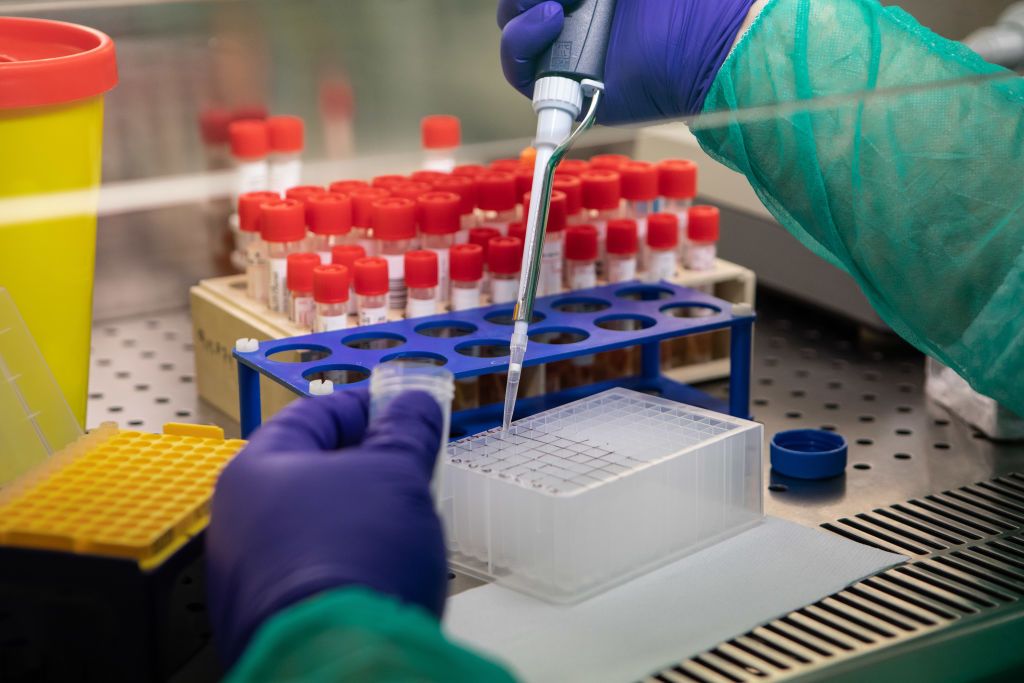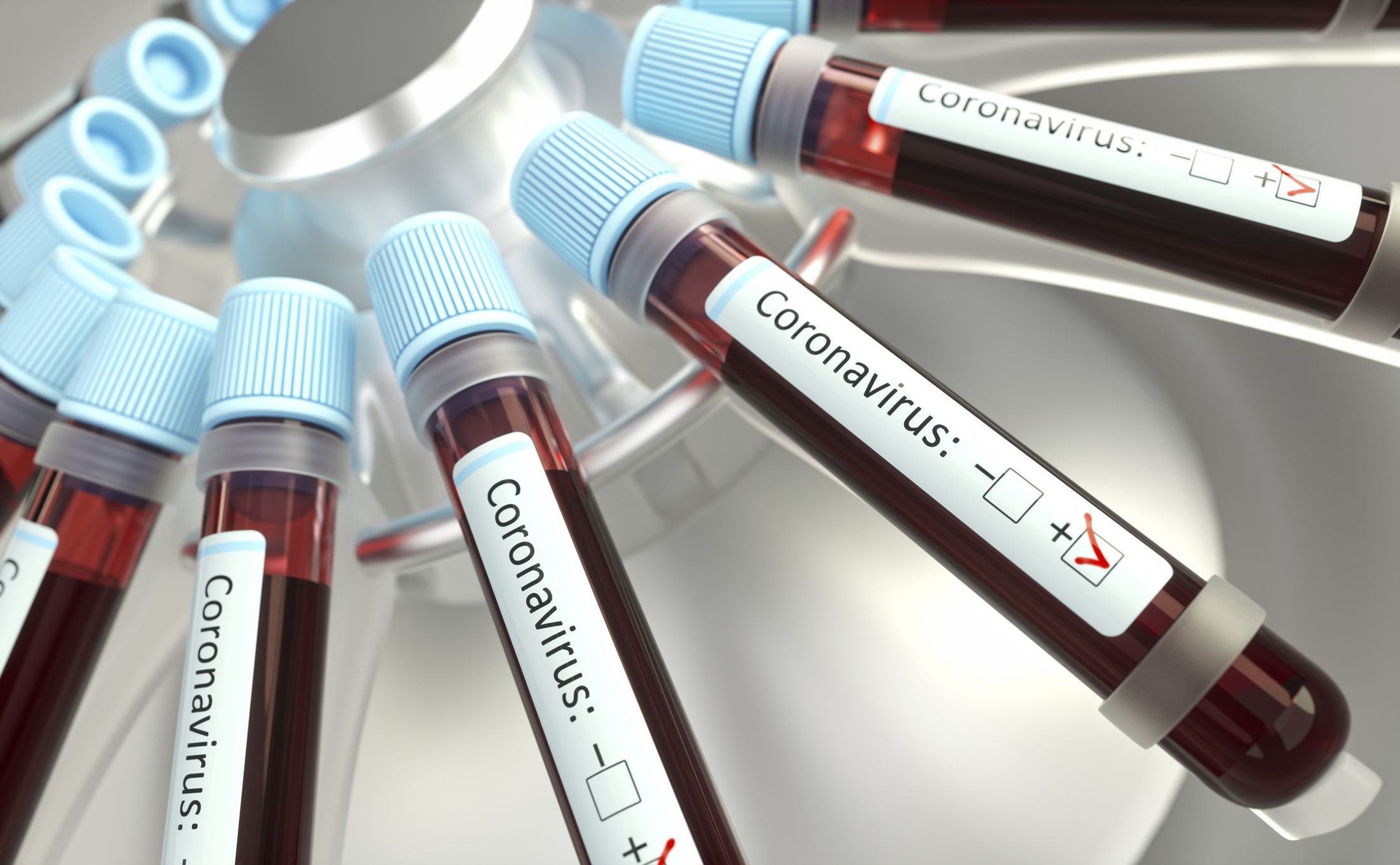Some People Think The New Coronavirus Made The Jump To Humans Via Snakes
- Research published in January suggested that the novel coronavirus made the jump from bats to humans via snakes.
- Experts have since debunked this theory, but they do think pangolins, or anteaters, may have played a role as an intermediate host.
Much is still unknown about the novel coronavirus, as you know—but experts are gathering more and more interesting info every day about the virus, how it behaves, and where it came from. One surprising tp of investigation? The new coronavirus and snakes.
While most scientists are in agreement that the virus started in animals—bats, specifically—and jumped to humans, researchers are still trying to figure out the details on how exactly that transfer went down. Since the first cases of COVID-19 were identified in December (the number of cases is now over 693,000 worldwide, according to the World Health Organization report from March 30), experts have looked into bats, pangolins (aka anteaters!), and, yup, snakes as all potential players in the spread of the virus.
While the scientific community has largely ruled out snakes as being directly involved in the transfer of the virus to humans, research on the role reptiles played in the outbreak has helped scientists better understand other aspects of this virus. Here, everything you need to know about snakes and novel coronavirus.
Why are people talking about coronavirus and snakes in the first place?
A little background info: The novel coronavirus is a zoonotic virus, which means it belongs to a class of diseases that are able to be transferred from animals to humans and vice-versa. About 80 percent of viruses that exist are zoonotic, says Richard J. Kuhn, PhD, a professor of biological sciences at Purdue University. (Other diseases like Ebola, Zika, and the flu are all zoonotic viruses as well.) In the case of novel coronavirus, researchers have determined that bats were the likely original host.
But these diseases often jump from the origin animal to humans with the help of an intermediate host, meaning an animal that isn’t the first carrier of a virus, but one that contracts it and then transfers the virus to another animal, or a human. That’s why you may have seen headlines about snakes and the novel coronavirus recently.



In a study published in the Journal of Medical Virology in January, researchers compared parts of the novel coronavirus’ DNA to the DNA of suspected hosts of the virus and found similarities between that of the novel coronavirus and the DNA of certain snakes (specifically, the Chinese krait and cobra).
At the time of the study, that DNA similarities were thought to be indications that snakes were a natural reservoir for the virus, explains Haitao Guo, PhD, a professor of microbiology and molecular genetics at the University of Pittsburgh. A “disease reservoir” is an environment or organism in which a pathogen can live and reproduce, the Centers for Disease Control and Prevention (CDC) explains.
So do researchers really think snakes were the middleman (er, animal)?
The short answer is no. Snakes hunt bats in the wild, and snakes were sold in the Wuhan seafood market, which is where scientists believe the virus first jumped to humans, notes Guo. So it seemed plausible that a snake could have come in contact with an infected bat (or bat feces) and served as the intermediate host.
But, as scientists have done more research, many have raised questions about methodology and parameters of the initial snake study, Guo explains. Additionally, a study published by the American Chemical Society noted that coronaviruses usually only infect birds and mammals.



What’s more: Reptiles don’t normally play a role at all in viral outbreaks like this one. Neither Guo nor Kuhn could think of any examples where a reptile played a major role in a viral outbreak in humans. This is partly due to the fact that reptiles are cold-blooded and mammals are warm-blooded, explains Kuhn. This temperature difference would affect the virus’ ability to replicate in a new species, which means that in order for the virus to actually infect a human from a reptile, it would have to evolve much more than if it was jumping from another mammal to another human.
So what animal *did* serve as an intermediate host, then?
Research published within the past month points to pangolins, a scaly anteater found in parts of Asia and Africa, as a more likely candidate—though this is still up for debate in the scientific community.
For one thing, pangolins are also mammals. Plus, the dried scales of pangolins are often sold in wet markets, and likely were sold in the Wuhan market. The aforementioned American Chemical Society study also found genetic similarities between a coronavirus found in pangolins and the current novel coronavirus presenting in humans. However, the similarities are not strong enough for researchers to say for certain that the pangolin is the secret missing piece in the transmission of the novel coronavirus from animals to humans.
Whether it was snakes or pangolins or bats all by themselves, the best ways to protect yourself and others remain the same.
Per the latest CDC guidelines, the best way to avoid getting sick and help stop the spread of germs is by washing your hands with soap and water for 20 seconds, avoiding touching your face or hands, and disinfecting often-touched surfaces. Also, continue practicing social distancing and stay 6 feet away from other people if you do have to go out for groceries or supplies.
If you do feel sick, self-quarantine for at least two weeks. Even if you don’t feel sick, if you’ve been in contact with someone who has tested positive for COVID-19, the best thing you can do to protect others is to *stay home.*
Source: Read Full Article
